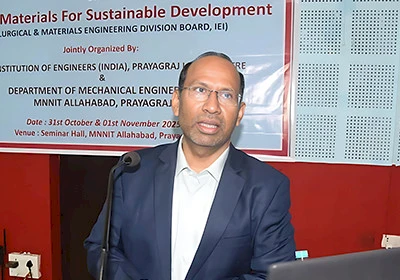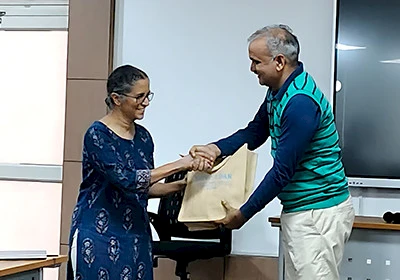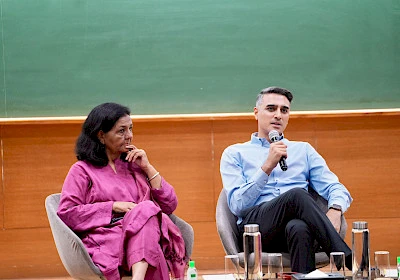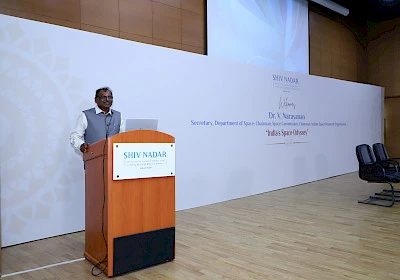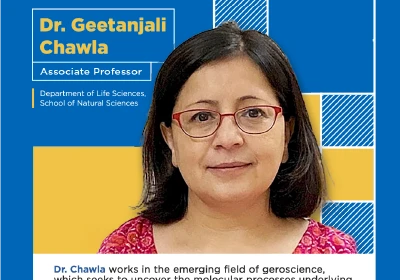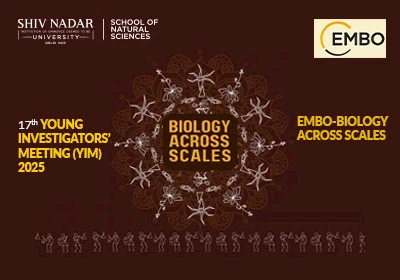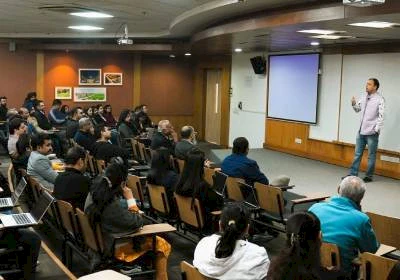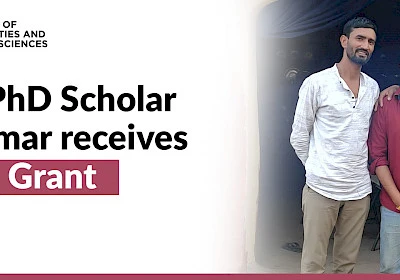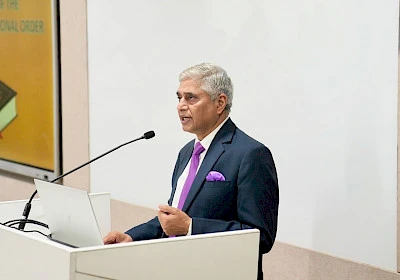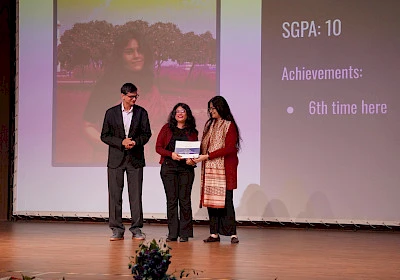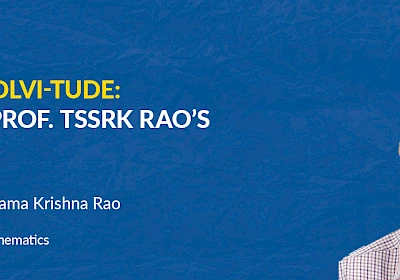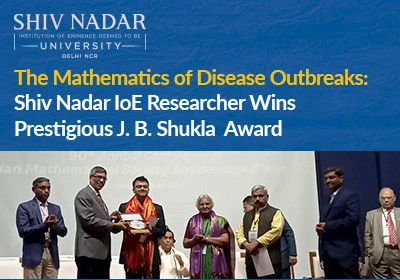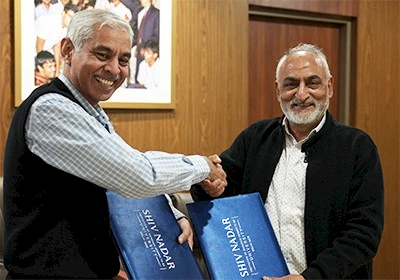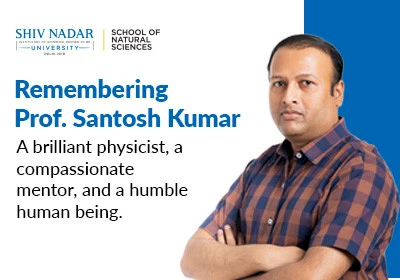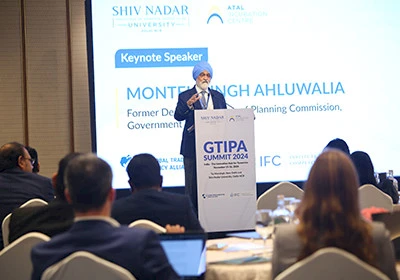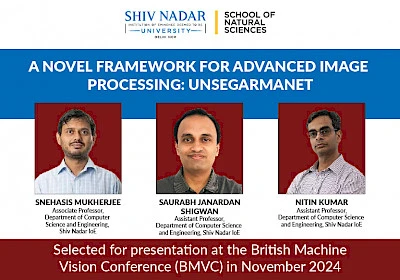News: All News
Dr Ghanshyam Pal appointed Senior Member of INAE
Dr Ghanshyam Pal has been elected a Senior Member of the Indian National Academy of Engineering (INAE), marking a significant recognition of his...
Clever Soap For A Cleaner Future
The ubiquitous soap occupies the least space in any household, and a large part of human perception about hygiene and notions of beauty. According...
Nanocrystals in the Spotlight: Orchestrating a ‘Light’ Revolution
In the rapidly evolving world of optoelectronics, where light and matter interact on timescales of trillionths of a second, Dr. Tushar Debnath and...
'India cannot grow by ignoring half its talent'
India’s economic and social ambitions will remain a distant dream unless women are given equal opportunity, investment and safety, Kanta Singh,...
Folding Under Pressure: How Living Cells Maintain Their Delicate Balance
Inside every living cell is a high-stakes balancing act that ensures proteins are made, folded, and discarded with precision. But what happens when...
Professor Subhabrata Sen Wins 2025 Royal Society of Chemistry Horizon Prize
In a groundbreaking moment for Indian science, Professor Subhabrata Sen and his team from the School of Natural Sciences at Shiv Nadar University,...
Dr. V. Narayanan: Son of the Soil with Sights on Stars
It's not always that one gets to break bread with the chief of the Indian Space Research Organisation (ISRO). Dr. V. Narayanan is a man on a...
University celebrates 11th Convocation with many firsts
Shiv Nadar University celebrated excellence, diversity, hard work and gratitude on Saturday during the Eleventh Convocation. The state-of-the-art...
The School of Natural Sciences Welcomes New Visiting Faculty to the Department of Chemistry
Srijita Banerjee The School of Natural Sciences at Shiv Nadar University is proud to welcome four distinguished scientists as newly appointed...
The Molecular Science of Ageing: How Nutritional Interventions Can Improve Health
Ageing is inevitable, but does illness have to be? In 2024, the National Council on Aging in the US reported that nearly 95% of adults over the...
Influencing Incipient Researchers: How Community and Institutional Events are Shaping the Life Sciences in India
YIM 2025: Preparing the Pioneers of Tomorrow Organised by India Bioscience and co-supported by Shiv Nadar Institution of Eminence (SNIoE) and...
AI in Academia: Transforming Higher Education
The Information Technology Office at Shiv Nadar University, Delhi NCR, organized a day-long workshop - 'AI in Academia: Transforming Higher...
Sociology PhD Scholar Manish Kumar receives IPN's Small Grant
First-year PhD candidate Manish at the Department of Sociology has received the Indian Pastoral Network Small Grant for his research project titled...
World in Flux: Geopolitics in the Age of Disruption
The timeless aphorism of Italian philosopher Antonio Gramsci - The old world order is dying, and the new world struggles to be born. Now is the...
Hydrologist Dr. Himanshu Kulkarni receives the 2025 International Water Prize
Dr. Himanshu Kulkarni, Professor of Practice from the School of Humanities and Social Sciences at Shiv Nadar University, has been named the 2025...
Shiv Nadar IoE join hands with Foxconn India
Shiv Nadar Institution of Eminence Deemed to be University has inked a Memorandum of Understanding (MoU) with Foxconn Hon Hai Technology India Mega...
Shiv Nadar University shortlisted for THE Asia Awards 2025
The University has been shortlisted in the ‘Outstanding Contribution to Regional Development’ category for the SHIKSHA Plus – Adult Literacy...
Shiv Nadar University is now ranked in all the major rankings
Shiv Nadar University is now ranked in all the major rankings Shiv Nadar University is now ranked by the major ranking, national and international,...
Celebrating the winners of Dean's List for Monsoon 2024
In a celebration to recognize students' academic efforts, the university gathered on Thursday (February 20) to honour the Dean's List winners for...
30 Years of Solvi-tude: Celebrating Prof. TSSRK Rao’s Research
How fast must the Earth spin for sunrise in New Delhi to be delayed by 2.5 hours compared to Jakarta? How long would the global economy withstand...
Shiv Nadar University, Delhi NCR awarded 'University of the Year 2024 - Emerging' by FICCI
Shiv Nadar University, Delhi NCR has won the prestigious 'University of the Year 2024' award in 'Emerging (10- 20 Years)' category at the...
Strangely Irresistible: Deciphering the Behaviour of ‘Strange Metals’
Superconductivity—the phenomenon where a material’s electrical resistance drops to nearly zero at extremely low temperatures—has long...
The Mathematics of Disease Outbreaks: SNU Researcher Wins Prestigious J. B. Shukla Award
Every year, the Indian Mathematical Society confers the prestigious J. B. Shukla Award to Indian scientists who have significantly contributed to...
Nostalgia, bonds and new memories under the Winter Solstice sky
The Winter Solstice at Shiv Nadar University campus was special this year. The day celebrated across cultures around the world saw the campus host...
A Partnership to Drive Innovation for a Better Future
Progress in research thrives not in isolation, but through meaningful collaborations that unite diverse expertise to solve complex challenges and...
In Memoriam: Prof. Santosh Kumar, An Example of Brilliance, Passion, and Humility
The recent and untimely passing of Professor Santosh Kumar, Associate Professor at the School of Natural Sciences, Shiv Nadar Institution of...
Physicist, Proponent, and Pioneer—Celebrating the Life of the Late Prof. Rohini Godbole
How does one sum up the life of one so exalted as Prof. Rohini Godbole? Perhaps it’s fitting to view her legacy through two profound lenses: the...
SNU hosts GTIPA talks to discuss India as an innovation hub
The Global Trade and Innovation Policy Alliance (GTIPA) Summit 2024, hosted by Shiv Nadar University, Delhi-NCR, in collaboration with the...
Groundbreaking Research from SNIoE Selected for Prestigious BMVC 2024 Conference
It’s hard to argue with the fact that interest in machine learning (ML) techniques has spiked throughout the world over the past few years....
US-India Ties: The Defining Partnership of the 21st Century
Discerning a world marred by discontinuities, breaks and ruptures in the motivations of state actors, relationships with their counterparts and...


